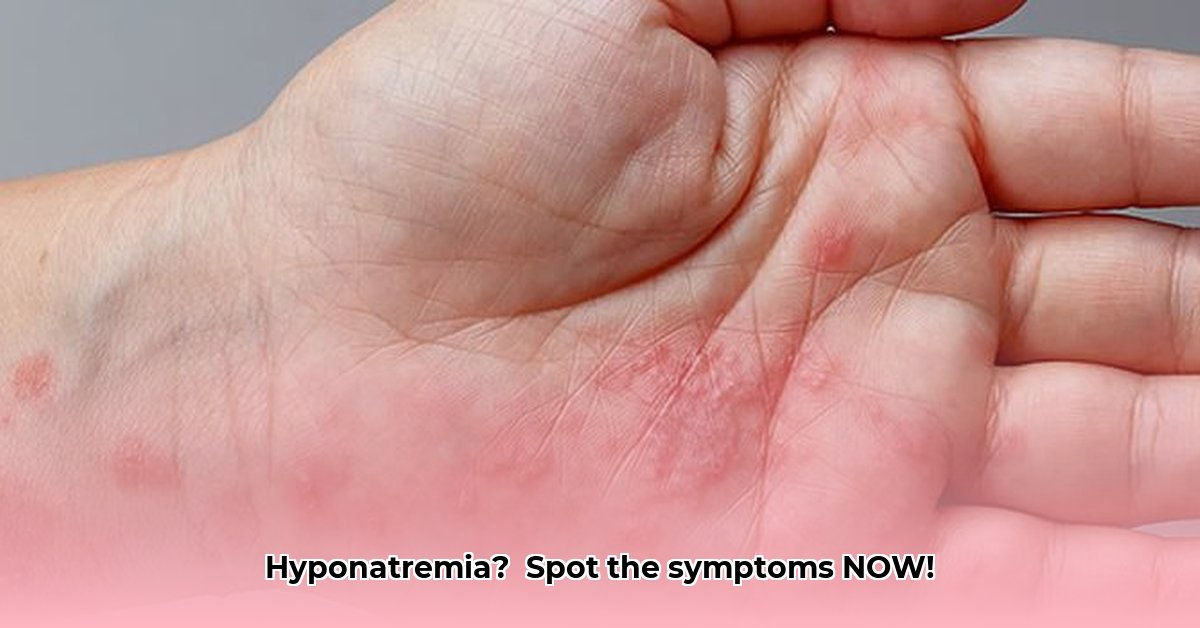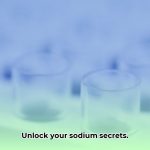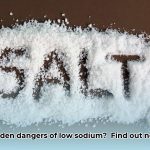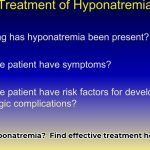Ever felt unusually tired, a little confused, or maybe even a bit nauseous? These aren’t always serious, but they could be signs of something called hyponatremia. It’s basically when you don’t have enough sodium in your blood, and that can cause some problems. This article will explain what hyponatremia is, what causes it, and most importantly, what you should do if you think you might have it. We’ll cover the symptoms, how to tell the difference between hyponatremia and other health issues, and give you a clear path to getting the right diagnosis and treatment. We’ll also talk about how to prevent it in the first place. It’s all about understanding this condition and knowing what steps to take to stay healthy. For more information on the ICD-10 code for hyponatremia, see [this resource](https://www.mearnes.com/hyponatremia-icd-10).
Symptoms and Causes of Hyponatremia: Recognizing the Signs and Getting the Right Help
Hyponatremia – it’s a fancy word for low sodium in your blood, and it’s something you definitely want to avoid. Think of sodium as your body’s essential electrolyte; it helps your nerves and muscles function properly and keeps your fluid balance in check. When your sodium levels dip too low, things can get pretty uncomfortable, and in severe cases, even dangerous. This guide will help you spot the red flags and understand what steps to take for hyponatremia diagnosis.
Unmasking the Signs: Recognizing Hyponatremia Symptoms
Hyponatremia symptoms are sneaky. They don’t always scream “low sodium!” They can be subtle and easily mistaken for other common ailments, making early detection tricky. The severity of your symptoms directly relates to how quickly and how dramatically your sodium levels drop. A slow, gradual decrease might cause only mild symptoms, while a sudden, sharp drop can be quite serious.
Early warning signs might be so mild, you brush them off. A little fatigue? Maybe you just need more sleep. A mild headache? Probably just stress. A touch of nausea? Perhaps you ate something that didn’t agree with you. However, these are all possibilities, and they could be early signals of hyponatremia. Experts emphasize that paying attention to your body and reporting any unusual symptoms to your healthcare provider is crucial.
As the sodium levels continue to fall, the symptoms become more noticeable and harder to ignore:
- Nausea and Vomiting: An upset stomach that doesn’t seem to go away.
- Headache: A persistent headache that doesn’t respond to typical over-the-counter pain relievers.
- Muscle Weakness or Cramps: Your muscles feel weak and tired, and you might experience painful cramps, especially in your legs.
- Confusion or Disorientation: This is a serious symptom, indicating that your brain isn’t getting the sodium it needs to function properly. You might feel foggy, struggle to concentrate, or have trouble remembering things.
- Increased Thirst: Feeling thirsty even after drinking fluids.
Further symptoms include:
- Loss of Coordination: Walking might feel unsteady, and you could have trouble with simple movements.
- Seizures: This is a medical emergency! Seizures are uncontrolled electrical activity in the brain, and they can be life-threatening.
- Coma: In extreme cases, very low sodium levels can lead to a coma, a state of unconsciousness.
If you experience severe symptoms like seizures or loss of consciousness, get emergency medical help immediately. Don’t delay; these are life-threatening situations requiring immediate hyponatremia management.
Understanding the Root Causes: What Causes Low Sodium?
Hyponatremia isn’t simply a lack of sodium; it’s an imbalance. Your body has too much water relative to the amount of sodium present. Several factors can contribute to this imbalance including medications and medical conditions:
- Overhydration: Drinking excessive amounts of water, particularly in a short time, can dilute the sodium in your blood. This is a common issue for endurance athletes who consume large quantities of fluids during intense training.
- Medications: Some medications, such as diuretics (water pills) and certain antidepressants, can increase your urine output, leading to sodium loss. Always discuss potential side effects of any prescription or over-the-counter medication with your doctor or pharmacist.
- Underlying Medical Conditions: A variety of health issues, including heart failure, kidney disease, liver cirrhosis, Syndrome of Inappropriate Antidiuretic Hormone Secretion (SIADH) and Nephrotic syndrome , can interfere with your body’s ability to regulate sodium levels. These conditions can make you more susceptible to hyponatremia.
- Hormonal Imbalances: Problems with the antidiuretic hormone (ADH), which regulates water balance, can also cause your kidneys to retain too much water, thus leading to diluted sodium levels. Hypothyroidism can also affect sodium levels.
- Excessive Alcohol Consumption: Specifically, beer potomania, which occurs with excessive beer consumption, can inhibit sodium levels.
- Diarrhea or Vomiting: Prolonged diarrhea or vomiting can deplete your body of fluids and sodium.
- Use of Recreational Drugs: Drugs like MDMA (Ecstasy) have been linked to serious cases of hyponatremia.
- Severe Burns: Loss of water from burn wounds can affect the balance of water in your body.
Risk Factors for Hyponatremia
Several factors can increase your risk of developing hyponatremia:
- Age: Older adults are generally more likely to develop hyponatremia due to age-related changes in kidney function and an increased likelihood of taking medications that affect sodium levels.
- Climate: Warm weather can lead to increased sweating, which can affect sodium levels.
- Physical Activity: Endurance athletes who drink excessive amounts of water during events are at risk.
- Certain Medical Conditions: Kidney disease, heart failure, SIADH, cirrhosis, diabetes insipidus, and Cushing’s syndrome all increase the risk.
- Recent Surgery: Post-operative patients are at an increased risk.
- Psychiatric Conditions: Primary polydipsia, a psychiatric condition characterized by excessive water drinking, can cause hyponatremia.
Getting a Diagnosis and Treatment: What to Expect
Diagnosing hyponatremia involves a simple blood test. Your doctor will measure your blood sodium levels (measured in mEq/L). Treatment depends entirely on the severity of your condition and the underlying cause. What level of sodium indicates hyponatremia? Typically, a level below 135 mEq/L is considered hyponatremia.
Mild cases might only require you to cut back on fluid intake. Your doctor may advise you to limit your water consumption for a while to allow your body to rebalance. In some cases, adjustments to medications, such as diuretics, may be necessary.
Severe cases, however, often require hospitalization for intravenous sodium replacement. This involves receiving a sodium solution directly into your veins to quickly restore your sodium levels, this is what hyponatremia treatment looks like. The speed at which this correction happens is paramount; too fast a correction can be extremely dangerous, potentially leading to central pontine myelinolysis or osmotic demyelination syndrome, types of brain damage. This is why it must be done under medical supervision. Medications like tolvaptan or conivaptan may also be prescribed to treat low sodium levels.
Crucially: Do not attempt to self-treat hyponatremia. It’s a complex condition requiring careful medical management. Always seek professional medical help for diagnosis and treatment.
When to Seek Immediate Medical Care: Don’t Hesitate
Emergency medical attention is absolutely necessary if you experience:
- Severe, Sudden Headache: A sudden, intense headache could signal a critical drop in your sodium levels.
- Seizures: These are serious neurological events and demand immediate medical attention.
- Loss of Consciousness: This is a life-threatening emergency requiring immediate intervention.
- Intense Nausea and Vomiting: Severe vomiting can further deplete your sodium levels and is a significant warning sign.
- Significant Confusion or Disorientation: These symptoms suggest that your brain isn’t functioning correctly due to the low sodium.
Your health is a priority, so don’t hesitate. Reach out to medical professionals if you have any concerns, following these hyponatremia guidelines.
Living Well: Prevention and Management Strategies
While some cases of hyponatremia are unavoidable, especially those related to underlying conditions, you can take steps to minimize your risk:
- Balanced Fluid Intake: Follow general guidelines for fluid intake. Avoid chugging massive amounts of water, particularly during or after strenuous physical activity. Aim to drink when thirsty and be mindful of urine color—pale yellow generally indicates adequate hydration.
- Electrolyte Replacement: When engaging in strenuous activities, especially endurance sports, consider consuming fluids with electrolytes, such as sports drinks.
- Medication Awareness: Discuss potential side effects of all medications with your doctor or pharmacist, paying close attention to those that might affect your fluid balance.
- Managing Existing Health Conditions: If you have conditions like heart failure, kidney disease, or liver disease, work closely with your healthcare team to manage these conditions effectively. This can significantly reduce your risk of hyponatremia.
- Regular Check-ups: Schedule regular check-ups with your doctor, particularly if you have any risk factors for hyponatremia. Early detection is key to
- Wellness Fair Ideas for Work to Boost Employee Wellbeing - December 15, 2025
- Affordable Employee Wellness Fair Ideas for Any Budget - December 14, 2025
- Employee Wellness Programs Strategically Benefit Employee Health And Retention - December 13, 2025
















